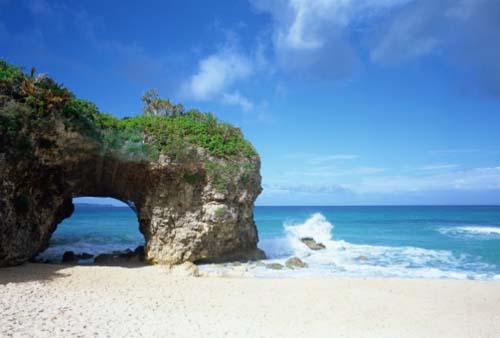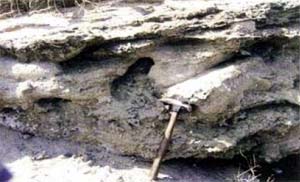Dec 21, 2025
Dec 21, 2025
The phobia of global warming is in the air. Everyone is concerned about it. It is natural, because there is a fear of the consequences. Media gets prime time slots to air the concern about the issue; the print media gives lots of space to the news related to the subject. Everyone seems to be on a mission of blame game! Everyone claims that this two legged creature called the man is responsible for the problem. Well to some extent they are right, yet to a limited extent. Global warming is inevitable.

The earth's history has ample records to prove that between the two cooling phases there was always a warming phase.
|
The sea is not merely a giant tub of water it is something pulsating with energy. Its level can change due to several reasons, global warming being also one of them. The sea levels of the past have been varying and will keep on changing with the passage of time. |
At present we are in a warming phase. The projected consequences talk of the rise in the sea level. Some claim that Bangladesh would submerge, some claim that most of the Indian coastal townships will face deluges from the sea. Well who knows what the destiny has in store for the mankind! But yes the evidences coming forth from different sources do tell a lot about what the geological past was like. The past is a window for the future, hence the significance.
G.G. Vaz, M. Hariprasad and B.R. Rao of Marine Wing, Geological Survey Of India (GSI) have recently struck some interesting evidence about the highest palaeo-sea-levels around Mandappam on southeast coast of India. Mandappam is a small town in Ramnathapuram district, Tamilnadu. It represents the southernmost tip of the country closest to Sri Lanka.
Studying the geography of the land and the seas of the eons of the yore is part of the profession of the geologist. Since the curiosity to know about the past coast lines has gained momentum in view of the hue and cry about the global warming, the interest of geologists in the matter is but natural. But it must be borne in mind that digging the past is his second habit. Palaeo-coastlines are studied with the help of satellite imageries and also confirmed by ground checks. It is easy to say 'yes this is the mark of a paleo-shore'. But it needs some extra efforts to actually date it to establish its antiquity. Carbon dating is a favorite method when dealing with coastlines that existed upto the Pleistocene era. 'The datable materials collected from the palaeo-high sea-level positions from the western and eastern segments have yielded 14C ages between 1,20,000 and 51,000 years BP. These 14C ages reveal that the Holocene (up to 10,000 years BP) sea level reached a maximum between 6500 and 51,000 years BP' say Vaz and his colleagues.
Shore lines or strandlines are the lines that mark the interface between the land and water. They change everyday and also over the geologic ages. This is because nearly all coast-lines are prone to relative movements between land and sea. Rise of sea level or subsidence of the land leads to the submergence of landscape already moulded by the sub-aerial weather agents. Strand lines are studied with the help of identification of beach rocks along the shorelines. Such rocks have already been described by earlier workers along the shoreline of Gulf of Mannar indicating paleo-shores. Coastal land forms of southern Tamilnadu indicate higher sea levels in the eras gone by along the east coast and Andaman Islands. In addition lots of studies on sea level variations along the coasts of Tamilnadu based on remote sensing application techniques; seasonal shoreline changes (oscillations) of Tamilnadu; presence of thermal springs in coastal areas of Palk Bay their implications to seismology etc have all been studied by various agencies from time to time.
 Vaz and his colleagues were however, attracted by something else. Mandappam foreland or the narrow piece of land stretching eastward between Gulf of Mannar in the south and Palk Bay in the north drew their attention. This narrow stretch of land has sandstone rocks deposited on both sides by the sea. These occur up to an altitude of 2 m asl. These rocks had enough material which could be precisely dated. In other words the material was such that the age of deposition of these rocks could be ascertained with much certainty. For carbon dating organic matter is suitable. These marine sandstones had shells of mollusks and corals, which were sent for carbon dating at the Birbal Sahni Institute of Paleobotany (BSIP), Lucknow. The sandstone at Mandappam termed as Mandappam sandstone is exposed as far as the tip of the Mandappam foreland. Vaz and colleagues presume that Mandappam sandstone forms the basement for younger coral reefs of Rameswaram Island.
Vaz and his colleagues were however, attracted by something else. Mandappam foreland or the narrow piece of land stretching eastward between Gulf of Mannar in the south and Palk Bay in the north drew their attention. This narrow stretch of land has sandstone rocks deposited on both sides by the sea. These occur up to an altitude of 2 m asl. These rocks had enough material which could be precisely dated. In other words the material was such that the age of deposition of these rocks could be ascertained with much certainty. For carbon dating organic matter is suitable. These marine sandstones had shells of mollusks and corals, which were sent for carbon dating at the Birbal Sahni Institute of Paleobotany (BSIP), Lucknow. The sandstone at Mandappam termed as Mandappam sandstone is exposed as far as the tip of the Mandappam foreland. Vaz and colleagues presume that Mandappam sandstone forms the basement for younger coral reefs of Rameswaram Island.
The sediments deposited by the sea at the beach are an assortment of shells and sands made of shells and quartz. These sediments reflect a high energy condition as the waves at the beach never sit idle. The Mandappam sandstone has all these characters of a beach rock.
The dates obtained from the organic matter in these rocks indicated that Mandappam sandstone was formed as a beach rock between 5650 and 6160 years BP. It is interesting to know that around 7300 ' 130-110 yrs BP the sea level in the east coast of India between Cape Comorin to Godavari stood approximately three meters above the present low tide line (LTL) and at about two meters above the present LTL around 5500 yrs BP. The information available from Sri Lanka also corroborates the fact during 6170-5100 yrs BP the sea level reached 2-3 m above the present sea level. This information also corroborates well with the world glacio-eustatic sea level curve 12 day Vaz and his colleagues.
While the neighboring areas like Palk Bay, Gulf of Mannar and around Dhanushkodi in Rameswaram have shown the evidences of neotectonic movements (subsurface upheavals in the past 10,000 years), the Mandappam area has remained stable. It does not show any trace of vertical movement during the past 10,000 years. Therefore the find of Vaz et al assumes significance as the sea levels recorded by them at Mandappam have not been affected by earth movements.
The sea is not merely a giant tub of water it is something pulsating with energy. Its level can change due to several reasons, global warming being also one of them. The sea levels of the past have been varying and will keep on changing with the passage of time.
The sea is a wonderful carver that is why Ralph Waldo Emerson (1803-82) had said
'I with my hammer pounding evermore
The rocky coast, smite Andes into dust,
Strewing my bed, and, in another age,
Rebuild a continent for better men.'
27-Apr-2008
More by : V. K. Joshi (Bijji)